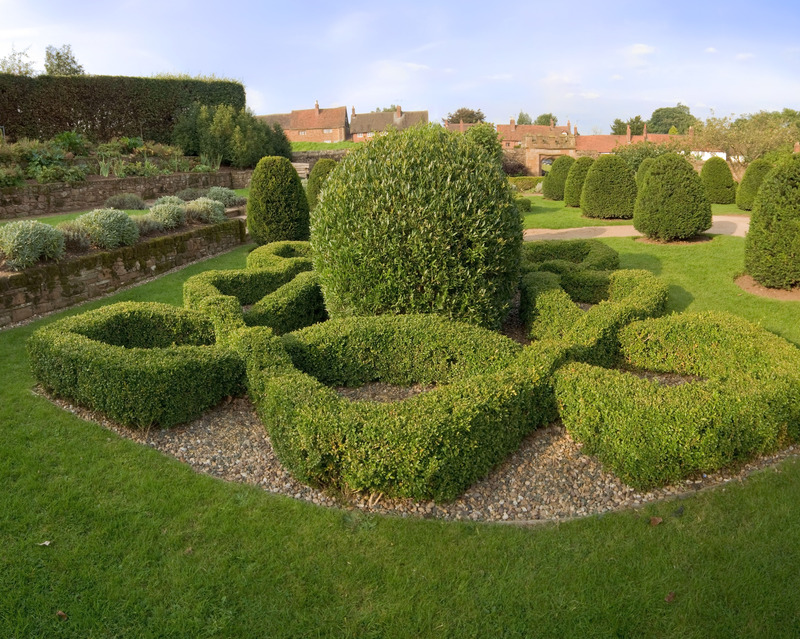Beginner's Guide to Fixing a Neglected Garden
Posted on 07/09/2025
Beginner's Guide to Fixing a Neglected Garden
Has your garden fallen by the wayside? It's not uncommon for outdoor spaces to become overgrown and uninspiring, especially with busy schedules and the demands of everyday life. But don't worry--reviving a neglected garden isn't as daunting as it seems! This comprehensive guide will walk you through each step of transforming your ignored patch of green into a thriving, beautiful retreat. Whether you're an absolute beginner or someone looking to rekindle their gardening enthusiasm, this article provides practical tips, advice, and actionable steps tailored to fixing a neglected garden.

Why Restore a Neglected Garden?
- Boosts Your Property Value: A well-kept garden enhances curb appeal and home value.
- Health Benefits: Gardening is a great way to get physical activity and reduce stress.
- Biodiversity: A restored garden supports pollinators and local wildlife.
- Outdoor Enjoyment: Create a space for relaxation, entertainment, and connection with nature.
With a clear understanding of the benefits of fixing a neglected garden, let's dive into the process step by step.
Step 1: Assess Your Overgrown Garden
Before grabbing your tools and gloves, take the time to assess the current state of your garden. Walk around and observe:
- What types of plants are present? Identify any trees, shrubs, perennials, and weeds.
- Are there any healthy plants worth saving?
- Is the soil compacted or crumbly?
- Are paths, fences, or other garden structures broken or damaged?
Take pictures and make notes; they'll help you measure your progress and plan your approach. This is a crucial foundation for reviving a neglected backyard.
Step 2: Make a Garden Revival Plan
Prioritize your goals:
- Do you want a flower garden, vegetable patch, or a low-maintenance lawn?
- Is your future garden drought-tolerant or lush and colorful?
- Will you need entertaining spaces or child-friendly areas?
Once you know your objectives, create a simple sketch, noting the plants to keep, areas to clear, and features to restore. Having a plan saves time and reduces overwhelm as you work through your neglected garden recovery.
Step 3: Gather Your Garden Tools and Supplies
For beginners, here are some essential tools for fixing a neglected garden:
- Gloves: Protect your hands from thorns, pricklies, and dirt.
- Pruning shears and loppers: For cutting back overgrown plants.
- Shovel and spade: Dig up weeds and turn soil.
- Rake: Gather leaves, debris, and level the soil.
- Wheelbarrow or tarp: Move green waste with ease.
- Fork: Break up compacted ground.
- Watering can or hose: Keep plants hydrated as you restore the garden.
While some tools can be borrowed or rented, investing in good quality basics is wise for ongoing maintenance.
Step 4: Clear the Garden of Weeds, Debris, and Waste
Start with a Clean Slate
The cornerstone of every neglected garden makeover is a thorough cleanup. Roll up your sleeves and tackle the following:
- Remove fallen branches, sticks, and stones.
- Pull out weeds by the roots; use a fork for stubborn ones.
- Prune back overgrown shrubs and trees, cutting away dead or diseased sections.
- Clear old mulch, rotting leaves, and any trash or litter.
- If your garden's been home to rodents or pests, wear a mask and gloves for safety.
This phase may take time, but restoring a neglected garden begins with removing all that doesn't belong! Compost what you can and dispose responsibly of the rest.
Tackle Invasive Plants Early
Some invasive species can choke out everything else. Identify common garden villains such as bindweed, brambles, or Japanese Knotweed, and remove them fully--roots and all. Persistent invaders may require several rounds of removal.
Step 5: Revive the Soil
Your garden's soil is its foundation. Neglected gardens often have compacted, depleted, or unhealthy soil. Here's how to bring it back to life:
-
Test the soil:
- You can use a simple home kit, or send a sample to a local extension office.
- Check for pH (acid or alkaline), nutrients, and organic content.
-
Loosen the earth:
- Use a fork or tiller to break up compacted layers, improve drainage, and aerate.
- Be careful around the roots of desired plants.
-
Amend as needed:
- Add organic matter such as compost, leaf mold, or well-rotted manure to enrich poor soil.
- Mulch bare areas to suppress new weeds and retain moisture.
Healthy soil means healthy plants--so don't skip this crucial step in your garden revival journey!
Step 6: Decide What to Keep, Remove, or Replace
- Identify existing plants worth saving--mature trees, big shrubs, perennials with new growth, or bulbs showing leaves.
- Remove what's dead, diseased, or simply no longer fits your new garden plan.
- Rescue overcrowded plants by digging and dividing, allowing room for healthy growth.
- Transplant survivors to better spots if needed--early spring or fall is best for most moves.
This thoughtful curation gives you a balanced, manageable starting point for restoring a neglected yard.
Step 7: Design and Replant Your Garden
Choosing Plants for a Low-Maintenance Garden Makeover
As a beginner, you'll want to select hardy, easy-to-grow plants. Some suggestions:
- Perennials like daylilies, hostas, echinacea, and salvia for enduring color.
- Drought-tolerant plants such as lavender, sedum, or ornamental grasses.
- Groundcovers (e.g., vinca, creeping thyme) to cover bare patches and block weeds.
- Native species which support local wildlife and adapt easily to your climate.
- Compact shrubs or small trees for structure and shade (consider boxwood, hydrangea, or dogwood).
- Annuals for a quick pop of seasonal color--marigolds, zinnias, or nasturtiums.
Plan variety: Mix heights, textures, and bloom times for continuous interest. Place taller plants at the back or center, and fill gaps with lower-growing options.
How to Plant in a Restored Garden
- Dig holes twice as wide and as deep as each plant's container.
- Add compost at the base for a nutrient boost.
- Gently loosen rootballs before planting to encourage outward growth.
- Water thoroughly, and mulch around the base.
Be patient while your revived garden takes shape! Some neglected patches may need a season or two to show their full potential.
Step 8: Restore Paths, Fences, and Features
A neglected garden might have broken borders, uneven paths, or rickety fences. Improving these features not only polishes the overall look but also makes your outdoor space safer and more enjoyable.
- Weed out and relaid flagstones and gravel paths.
- Fix or replace damaged fencing and gates.
- Clean and repair raised beds or retaining walls.
- Add a fresh coat of paint to sheds or benches for instant uplift.
Tip: Edging your garden beds gives clean lines and stops grass from creeping in!
Step 9: Water and Mulch Wisely
- Deep watering is better than frequent shallow soaks.
- Water early in the morning or late afternoon to reduce evaporation.
- Mulch every bare patch to lock in moisture, moderate soil temperature, and block weeds.
Use wood chips, straw, or leaf litter as mulch, topped up as needed throughout the season.
Step 10: Routine Maintenance (And How Not to Lose Steam!)
Staying On Top of Your Garden Transformation
Your restored garden will flourish with a little regular attention:
- Check for weeds weekly and pull them before they go to seed.
- Deadhead spent flowers to encourage more blooms.
- Prune shrubs and trees as needed to maintain shape and health.
- Top up mulch before weeds become a problem again.
- Feed your plants with organic fertilizer when they're actively growing.
Don't forget: Take time to relax and enjoy your garden's progress! Gardening is a journey, and even the smallest improvements bring satisfaction.
Bonus Tips for Reviving an Abandoned Garden Space
- Start small: Focus on one area, bed, or border at a time to keep the process manageable.
- Enlist help: Family, friends, or neighbors can make light work of heavy tasks.
- Compost your garden waste to reduce landfill and create free fertilizer for next year.
- Join a local gardening group or online forum for advice and encouragement.
- Keep a garden journal (with photos!) to track your progress and celebrate achievements.
Common Mistakes to Avoid When Fixing an Overgrown Garden
- Stripping everything at once: You may lose valuable established plants or disturb wildlife.
- Ignoring soil health: Even the most beautiful plants will struggle in lifeless dirt.
- Overplanting: Stick to your plan to avoid a crowded, chaotic look.
- Skipping mulch: This can undo much of your hard work by letting weeds return quickly.
- Setting unrealistic expectations: A full transformation won't happen overnight--pace yourself.

Frequently Asked Questions: Neglected Garden Restoration
How long does it take to fix a neglected garden?
The timeline depends on the garden's size, level of neglect, and your available time. Most beginners see good results in a few weekends, but full revival could take an entire growing season or more.
Do I need chemicals to clear weeds and pests?
Not always. Hand-pulling, mulching, and healthy planting can control most weeds naturally. Spot-treat pests with organic solutions like neem oil or introduce beneficial insects.
What if I don't have a lot of time?
Focus on low-maintenance plants, simple garden layouts, and thick mulch. Even 30 minutes a week can prevent your garden from backsliding into neglect!
Conclusion: Your Path to a Beautiful Restored Garden
Fixing a neglected garden is achievable for any beginner. With a clear strategy--assessing, clearing, reviving soil, replanting, and maintaining--you can transform even the most abandoned space into a personal haven. Remember, every step, from pulling the first weed to planting your new favorites, brings you closer to your outdoor dream.
Start today, and enjoy the journey to a lush, thriving, and welcoming garden. Soon, you'll feel the pride and joy that comes from restoring a neglected garden--from neglected to nurtured!



